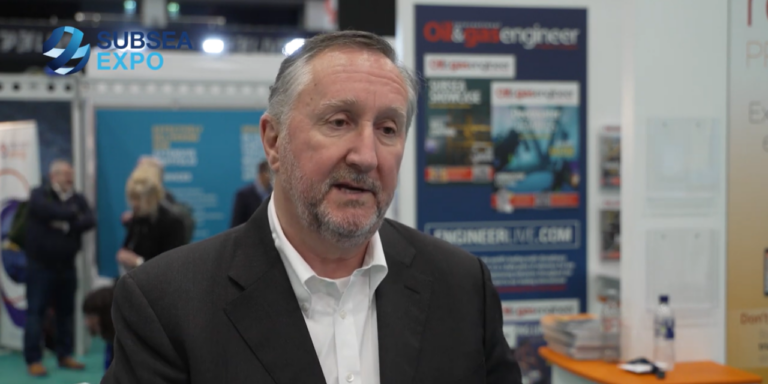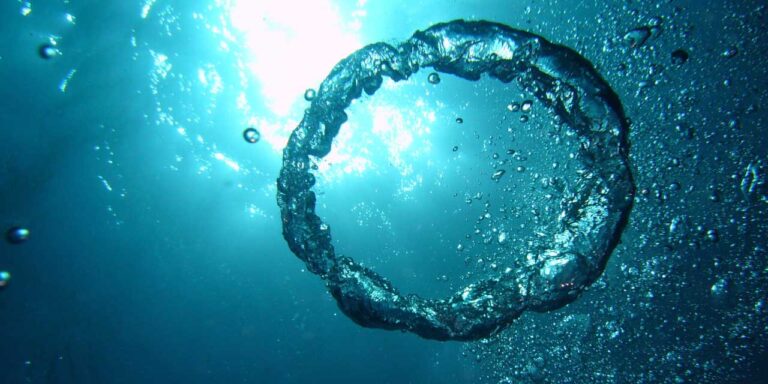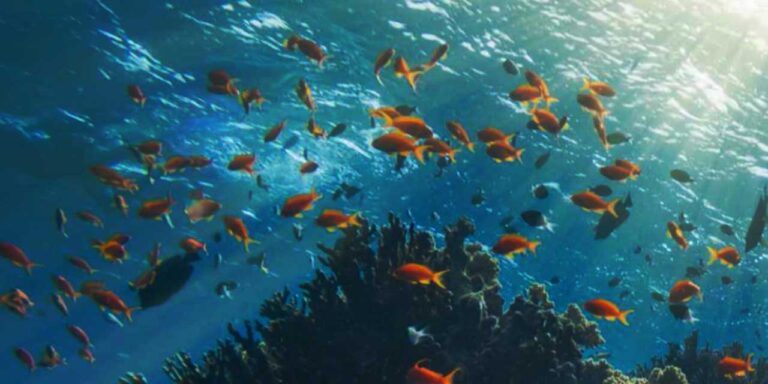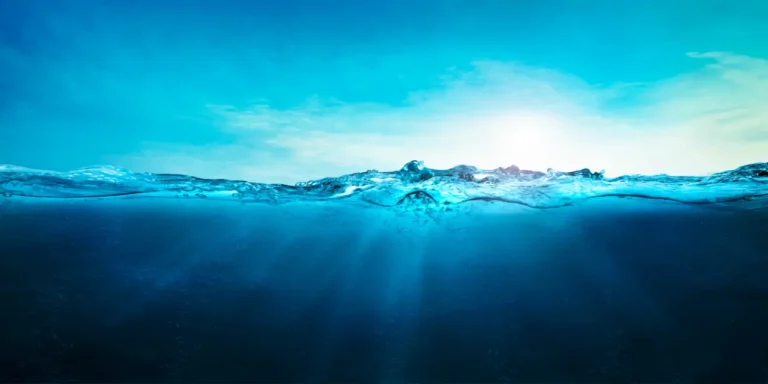
This blog is a summary of the speech that our CEO, Chris Brooks delivered at The Delphi Economic Forum in April 2023. You can hear the full speech here or below.
The theme of the panel was ‘He who controls the oceans owns the world’ and Chris approached this from the perspective of all those seeking to obtain valuable data from our oceans and the challenges they currently face.
“My colleague was at a tech conference recently in Florida from where he passed on this incredible statistic – that 100 years ago in the state of Florida, a drop of water that fell as rain there had a 2% chance of being swept into the oceans. Today it’s reversed, more than 90% of water falling there now goes into the ocean. 100 years ago, it would stay within 6 feet of where it dropped, so now the outflow to our oceans is phenomenal and that’s down to human beings’ propensity to create structures that move and control water automatically. We’ve always grasped that controlling water and the oceans, in a positive way, is an important thing. Controlling water in a positive sense will control food, famine, security, and so on. So, by its very nature, controlling the oceans means you can control the world and that’s a legacy we’ve all inherited – and one we will pass on too.
But if controlling the oceans means understanding all the information and data that they hold, then we need to think about that more carefully. Because if that’s what it means, then the prevailing wisdom is that “we know more about space than we do about the oceans”.
It’s not strictly true, space being infinite, but when you consider since 1969, we’ve sent 12 people to the moon while only three people have been to the bottom of the Mariana Trench, and you could fit the entire landmass of the Earth into the Pacific Ocean, yet 95% of the oceans are unexplored. According to Fugro, we’ve only mapped 23.4% of the ocean floor, it becomes a pretty reasonable statement to make; especially when you think it’s easier to scan the ocean from space and less environmentally damaging to send data signals from Mars than from the seafloor. With so much ocean we just don’t know about, how do we think we can control them?
What I hope you’re starting to realise is that controlling the oceans and all the information, and the data they contain is challenging. Controlling the surface may look easier – you need a navy, right, or a fleet of ships? But controlling the information and data from beneath the oceans, that’s a whole different ball game.
According to the UN, 40% of the world’s population live within 100 kilometres of the coast – that’s 2.4 billion people. And more than 10% (around 600 million people) live in coastal areas less than 10 metres above sea level. According to NASA, there are 620,000 km of coastline in the world So understanding what’s going on along our shores is fundamental to understanding how we can protect against coastal erosion and rising sea levels. And as a species we all understand that it’s about time we start having a positive impact on our oceans and shorelines, rather than a more negative effect which is a big part of the story of the last 100 or so years.
We need to understand what’s going on, what the baseline is, what impact we’re having. We have to make decisions about our waterways and oceans, what’s impacting them, to make good decisions for our future – so that we can provide good leadership on it, and effect good control over our oceans, to provide safety and security for the next generation and for our planet.
And having a gut feel about what’s going on just won’t cut it.
Oceans aside for a second, everywhere else on Planet Earth, we have data collected for everything and anything, using the Internet and now through the Internet of Things. Our biggest challenge then is how do we get the same amount of data (which is certainly valuable, and definitely there) out of our oceans. How do we get data from where it’s being collected, below the surface, through the water to the surface, and from the surface to shore to where it’s going to be analysed? How can we create better platforms for collecting, collating and transmitting ocean data so we can understand it better and make far more informed decisions, every day?
The need for data for the oceans for a range of economic imperatives, such as food, energy, defence, the climate crisis, is critical and however we obtain it, it must be sustainable. The thematic pillars for this conference, Geopolitics Disrupted; Climate & Environment; Sustainable Economy & Finance; Social Inclusiveness; Technological Advancement; sum up the urgency of obtaining and employing the secrets the oceans contain.
So how do we currently obtain ocean data – and what are the challenges they present? Is it possible to just build the internet underwater and make that talk to the internet onshore? What is your belief about connecting all these things together underwater?
There are a number of methods we use to transfer data from underwater to the shore. The biggest challenge is the air/water barrier which creates disruption for some of these methods. Anyone who scuba dives will know that Wi-Fi doesn’t work underwater. If you have something that’s digital with you, it’s battery-operated. Wi-Fi or radio signals die as they cross the air/water barrier – so creating the internet underwater is something we need to rethink. This means, that without Wi-Fi, creating an IOT subsea, even in shallow coastal waters, is incredibly difficult, if not impossible.
Submarines use sonar or acoustic energy, but you’d be extremely challenged if you wanted to produce the internet using sonar or acoustic transfer.
Cables work but they’re fragile, they break easily and repairing and maintaining them is hugely expensive, weather-dependent, and environmentally disruptive. The internet itself is transported transcontinentally via cables on the seabed. Anyone who works in that industry – and I did for a number of years – knows how operationally challenging that all is.
Light transfer via optical modems can happen in still waters – but anyone who has shone a light into a glass of water will understand immediately that water bends light and can corrupt data flow unless conditions are absolutely perfect.
Yet the data we can obtain from below the water, to enable all the tools above water to receive its data, to interpret it, and make quantifiable decisions, from below surface/subsea data, is essential, and we want to be able to do it just like we do above the waterline. So how do we get data control – and therefore control of the oceans – to be more feasible?
So, as you may realise, I’m here with an answer in mind, which I am happy to talk about at the end of the panel. And it’s exciting and actually a technology that is as old as the Earth, that resolves the sustainability and meteorological challenges of the existing solutions. Our technology innovation is complementary; we’re an excellent option for any organisation seeking to obtain data from mangroves or fish farms, from wind farms, or from reefs. From environmental global research projects to aquacultural, to subsea structures like wind farms, transmitting automated digitised data remains a commercial and academic imperative. Our tech is resilient, a vital attribute for any tech that operates underwater. It’s silent, ensuring its impact on marine life is kept at a minimum, and it works invisibly, using EM fields, to deliver both the data and control we all seek. And finally, when it comes to controlling the oceans, it’s only by working collaboratively that we can achieve sustainable ocean governance, and that will lead to its preservation and even its restoration for future generations. And all this will help to further the universal goals of peace – and prosperity – for all.”






